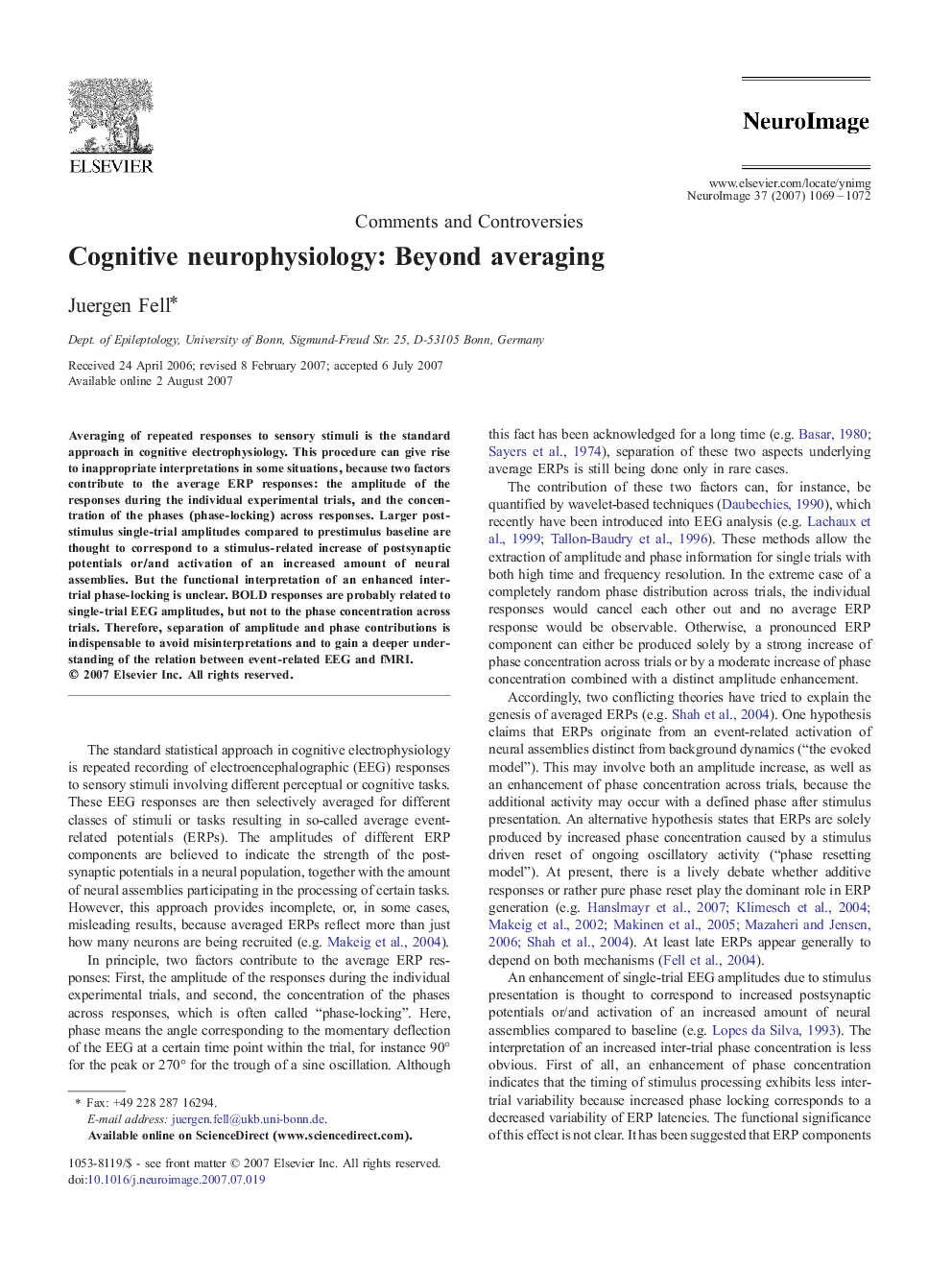| کد مقاله | کد نشریه | سال انتشار | مقاله انگلیسی | نسخه تمام متن |
|---|---|---|---|---|
| 3073475 | 1188839 | 2007 | 4 صفحه PDF | دانلود رایگان |

Averaging of repeated responses to sensory stimuli is the standard approach in cognitive electrophysiology. This procedure can give rise to inappropriate interpretations in some situations, because two factors contribute to the average ERP responses: the amplitude of the responses during the individual experimental trials, and the concentration of the phases (phase-locking) across responses. Larger poststimulus single-trial amplitudes compared to prestimulus baseline are thought to correspond to a stimulus-related increase of postsynaptic potentials or/and activation of an increased amount of neural assemblies. But the functional interpretation of an enhanced inter-trial phase-locking is unclear. BOLD responses are probably related to single-trial EEG amplitudes, but not to the phase concentration across trials. Therefore, separation of amplitude and phase contributions is indispensable to avoid misinterpretations and to gain a deeper understanding of the relation between event-related EEG and fMRI.
Journal: NeuroImage - Volume 37, Issue 4, 1 October 2007, Pages 1069–1072